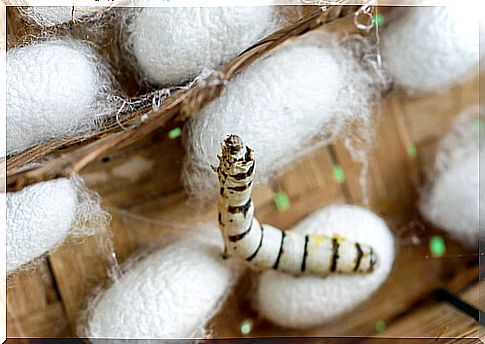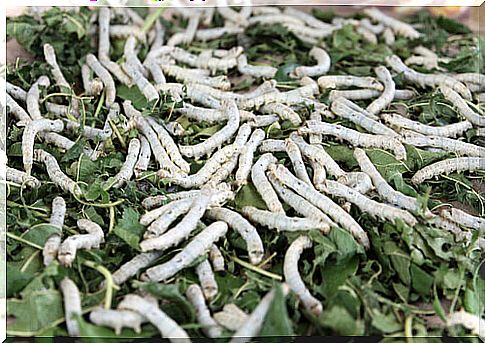Breeding Silkworms At Home

Especially valued for their production, silkworms can be raised at home if we take certain special care into account. Would you like to dedicate yourself to it?
What to know about silkworms
It is a lepidopteran insect native to Asia that has been domesticated from a wild moth. Its natural habitat spans India, China, Korea, Japan, and Russia. There is a legend that a Chinese empress accidentally discovered silk while drinking tea under a blackberry tree. A cocoon fell into the cup and, on removing it, began to weave with the thread.
Today it is bred in many regions of the world to take advantage of the extensive silk filament that the caterpillar produces when it prepares for metamorphosis (to become a butterfly).
A month after the egg is laid, the caterpillar makes a cocoon for its chrysalis phase: it uses the starch from the mulberry leaves, on which it feeds. With this he produces the silk thread for two days, thanks to a special digestive system.
How to raise silkworms at home
Silk has been used since ancient times due to its softness and resistance. If you are interested in raising silkworms at home, you should bear in mind that they are very sensitive animals and that they require continuous special care.

To start you will need silkworms, mulberry leaves, cardboard boxes, kitchen paper, and optionally a microscope or magnifying glass. These are the steps to follow:
1. Get the silkworms
Many growers or specialty stores sell ready-to-produce ‘families’ of silkworms. If it is the first time that you are going to handle these insects, we do not recommend that you buy eggs, since they are more delicate. But if you choose this option, you have to breed them between winter and fall. With live worms, their thing is in the spring.
2. Build the nest
A shoe box will suffice if you have a small production. Poke small holes in the lid so the insects can get oxygen and breathe well. Put paper napkins underneath and change them every two to three days.
If you have the eggs, keep them in a cool, dry place. The changes in the colors will tell you what situation they are in: dark the larva is still developing, light green is before hatching and yellow when the worm has already hatched.
3. Feed mulberry to silkworms
Mulberry leaves are the only food for these insects. For starters, you can try small or halved leaves. You cannot give it any other leaves, because they will not eat it, it will go bad and cause diseases in the silkworms.

4. Control size changes
If necessary, transfer the silkworms to a larger box, so that they are comfortable and everyone can eat without problems. The best thing you can do is make a ‘mattress’ of mulberry leaves and let them feed themselves.
5. Let them weave
The changes in silkworms prior to metamorphosis are more than visible. They will first become more pinkish in color and then they will expel a brown-green stool (something liquid).
In addition, they will look for a corner to be able to weave the cocoon. When this happens, put a plastic wrap on the bottom of the box. In this way, you can collect the eggs that are fertilized. Keep in mind that silkworms choose the first hours of the morning to emerge from the chrysalis and that it takes two days to build the cocoon with a single filament, which can measure up to 500 meters.
6. Clean the box
When the silkworms hatch from the chrysalis they will reproduce and fertilize new eggs. You can choose to let the ‘mother’ butterflies be free by opening the lid of the box for them.
For the rearing of silkworms we recommend that you consult a producer or someone who has some experience. You can even sign up for special courses or workshops in nurseries.









